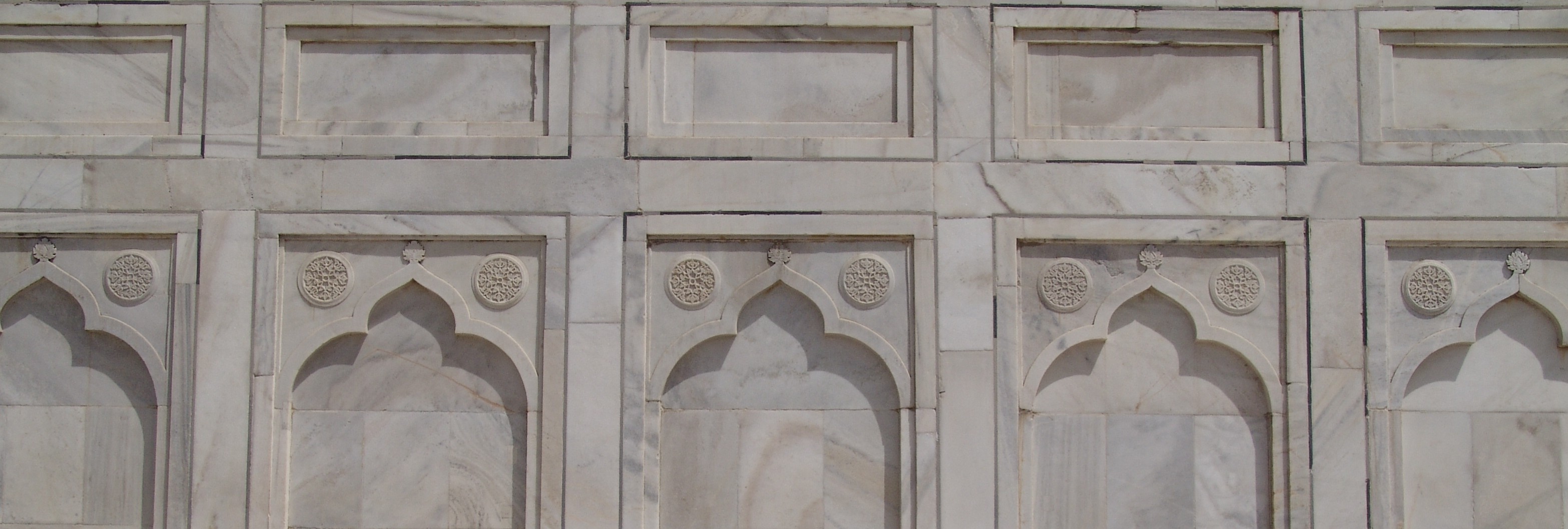
Islam and Marble
from the origins to Saddam Hussein
Michael Greenhalgh:



Although the images provided are restricted to monuments mentioned in the monograph itself, a large number of related or parallel monuments given as web links (especially to my server, ArtServe (cf. the section Islamic-Related Image Resources on ArtServe, below) will allow the user to extend, question and further illustrate many of the points made in the monograph. The images may be viewed with any image-viewer and, if the user simply clicks on the relevant hot-link below, pages of thumbnails backed by full-sized images will be displayed. But I have also included on this CDROM (by courtesy of Karl Maloszek) an excellent stand-alone viewer called Panorado, which will zoom in and out of all the images listed below, and deal smoothly with the large panoramas as well. At the foot of this page is a short account of why the Panorado Viewer offers greater flexibility than a web browser, and instructions on how to start it.
The final section below is devoted to web links related to my appendix on Saddam Hussein and Marble, so many of which it would have been messy to include in the printed text.
Michael Greenhalgh
The Sir William Dobell Professor of Art History
The Australian National University
Canberra, ACT 0200 AUSTRALIA
email: Michael.Greenhalgh@anu.edu.au
Rajasthan: A Dream in Marble: Dilwara Temples at Mount Abu, Rajasthan;
Within a web browser, software has yet to catch up with the large scale of
today's digital images (let alone that of some of the panoramas listed
above). Offering either a reduction to fit the browser window, or full-size,
is unsatisfactory. Much better are java applets which allow the image
to be presented and zoomed in and out at will: Panorado is one of
several suppliers who offer a
java applet for the fast viewing of panoramic images within
HTML documents. Unfortunately, most java setups are unable to handle
large images - over, say, two megabytes in size.
But there are no such limitations with the stand-alone (Windows) Panorado
Viewer/Browser, offering special support for very large pictures and
panoramic pictures. Dr. Karl Maloszek, its author, allows the distribution of his software
on CDROM by users who have paid the shareware fee, the only restriction
being that the viewer will deal only with material on the
CDROM, and not on the computer running it, unless a valid
Panorado licence is detected.
To start the Panorado Viewer/Browser, double-click on the "panorado"
directory on the CDROM, and then double-click on the panorado.exe program.
The program will offer two buttons at the right: click on Show CD/DVD,
and then on the image-directory name. Please note that Panorado will display
what look like duplicate thumbnails
of all images except the large panoramas - the ones named ...PNG are
the real thumbnails, needed so that they may display correctly when
the directories are opened in a web browser.
To zoom in and out, use the "+" and "-" keys, or the thumbnail on the mouse -
or the buttons at the top of the viewer.
Saddam Hussein and Marble
The Panorado Viewer